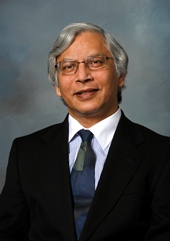The combination of the global economic recession and some questionable lending practices has brought Wisconsin into a banking crisis, as one in four state banks lost substantial funds in 2009.
However, some new strategies are being implemented to ease consumer concerns about their investments in banks.
Fourth quarter earnings reports from Wisconsin banks highlighted some disconcerting figures. According to a Feb. 23 Milwaukee Business Journal report, 25.3 percent of Wisconsin banks lost money in 2009, compared to 16.25 percent in 2008.
M&I Bank, the largest banking institution in Wisconsin, suffered a net loss of $735.6 million in 2009, according to a January press release.
In the same release, Mark Furlong, M&I president and CEO, said there are signs of recovery within the company.
“Credit quality has stabilized and core earnings trends have improved,” Furlong said.
Abdur Chowdhury, a professor of economics in the College of Business Administration, doesn’t seem convinced. He said businesses often become distracted by the pursuit of staying competitive and earning quick profit for shareholders.
“Like many banks in the country, M&I made loans that should not have been made,” Chowdhury said. “Now the chicken has come home to roost.”
Greg Hernandez, a Federal Deposit Insurance Corp. spokesman, was unable to comment on the specific condition of M&I but guaranteed the financials of the bank’s customers are completely insured by the FDIC up to the amount represented by the banking institution.
Still, some optimism exists for a turnaround in the industry. Wells Fargo’s merger with Wachovia in 2009 helped its net income grow from the year before. A Jan. 20 Wells Fargo press release announced that the company accumulated a record net income of $12.3 billion in 2009.
Fred Bertoldo, Wells Fargo’s regional president, said he is confident in the company’s relationship with its consumers and anticipates the company’s expansion.
“We anticipate building on our small business leadership by expanding lending to small businesses up to 25 percent in 2010,” Bertoldo said. “That’s $16 billion in new lending to businesses.”
Wells Fargo’s continued success and commitment to serving the economy is substantial, Bertoldo said.
“We believe that the true test of a financial services company – vision, values, business model, culture and people – is that it works at all times, even during challenging times like today,” he said.
The FDIC has made a list of problem institutions available to the public on its government Web site. While only 13 percent of these banks will actually fail, Hernandez said the list provides banking customers with the opportunity to find out ahead of time how their personal institutions are performing.
The Wisconsin Women’s Business Initiative Corporation, in partnership with Wisconsin Saves, held an FDIC-sponsored event in Milwaukee on Saturday, asking attendees to “Make Your Change Count.”
The event encouraged the public to bring in loose change and open savings accounts at responsible banking institutions. Attendees also had the opportunity to access personal credit reports and meet with credit card counselors.
As part of a nationwide campaign, “America Saves Week,” the event brought attention to the financial rights and responsibilities of American consumers.
Chowdhury explained it is the consumer’s role to be conscious and follow the financial records and activities of the banks.
“If customers feel that their banks are involved in ethically-challenged activities, then they should take their business elsewhere,” Chowdhury said.



